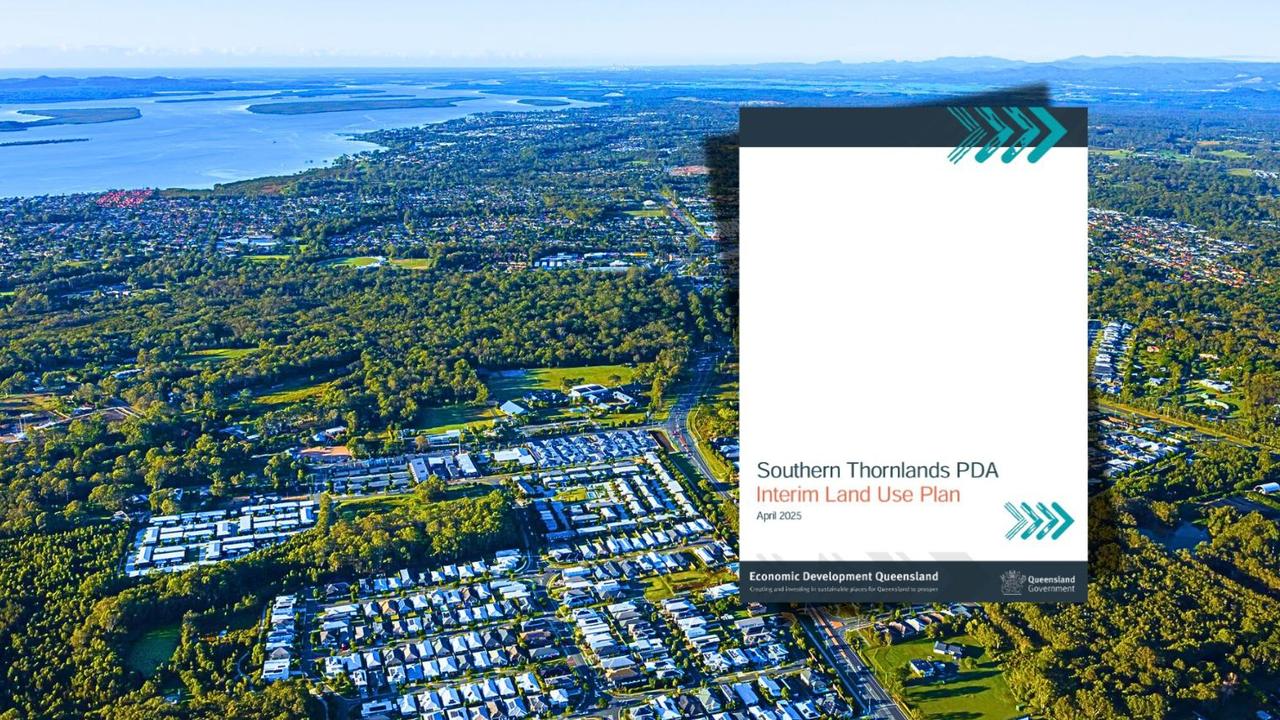Southern Lights, aurora australis captured across Queensland
Queensland stargazers and photographers have shared images of the state’s rare glimpse at the aurora australis as a huge geomagnetic storm continues to deliver a spectacular light show.
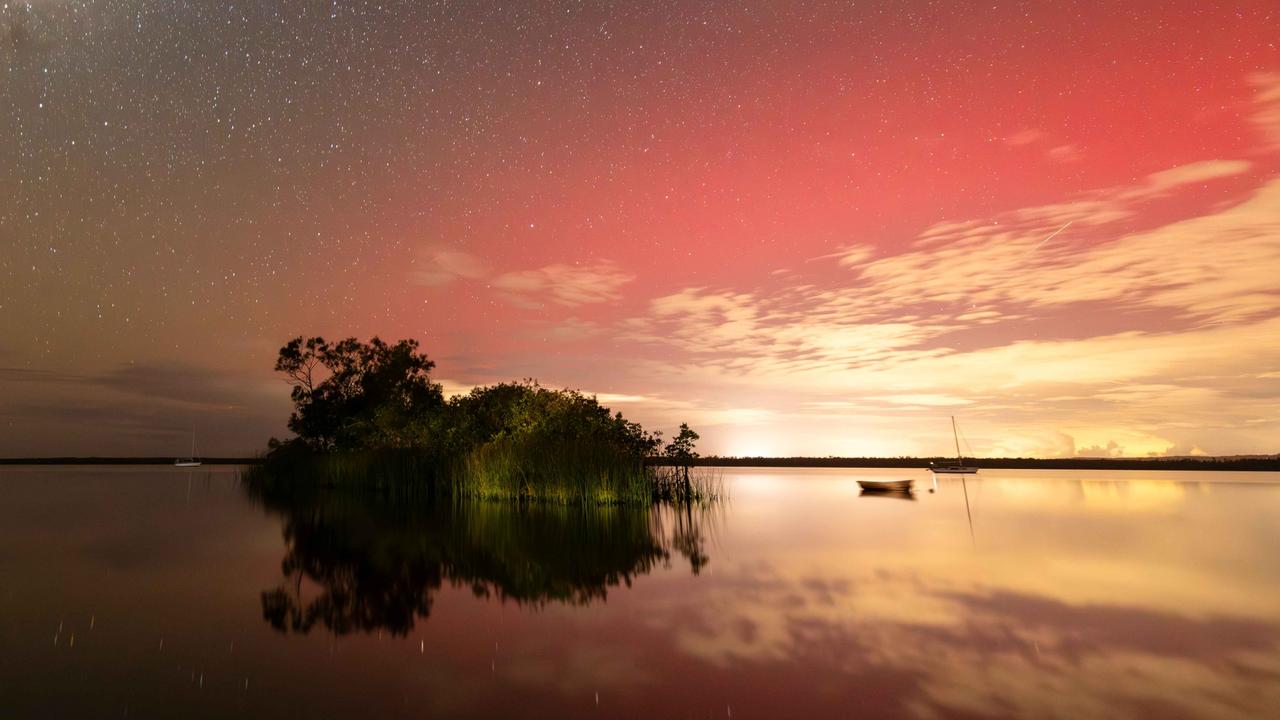
QLD News
Don't miss out on the headlines from QLD News. Followed categories will be added to My News.
One of the biggest geomagnetic storms in decades has made the southern lights — usually only obvious in Australia in Tasmania — visible in parts of Queensland.
Auroras are the result of disturbances in the Earth’s magnetosphere caused by the solar wind and the current geomagnetic storm has resulted in the phenomenon being seen in areas well outside the norm.
A Bureau of Meteorology spokesperson said the last geomagnetic storm of this magnitude – G5-level – took place in 2003.
“When G5 geomagnetic conditions occur, bright auroras will be visible at unusually low latitudes, including dark-sky locations near Sydney and Perth,” they said.
“Auroras may also be visible from as far north as Queensland and other low-latitude locations.
Skygazers across the state saw the phenomenon in places like central and North Queensland.
Photographer Glenn Adamus witnessed the southern lights from Emu Park on the Capricorn Coast.
“I was starting to see some photos coming up from outback New South Wales from a couple of colleagues, so I thought I’d give it a go,” he said.
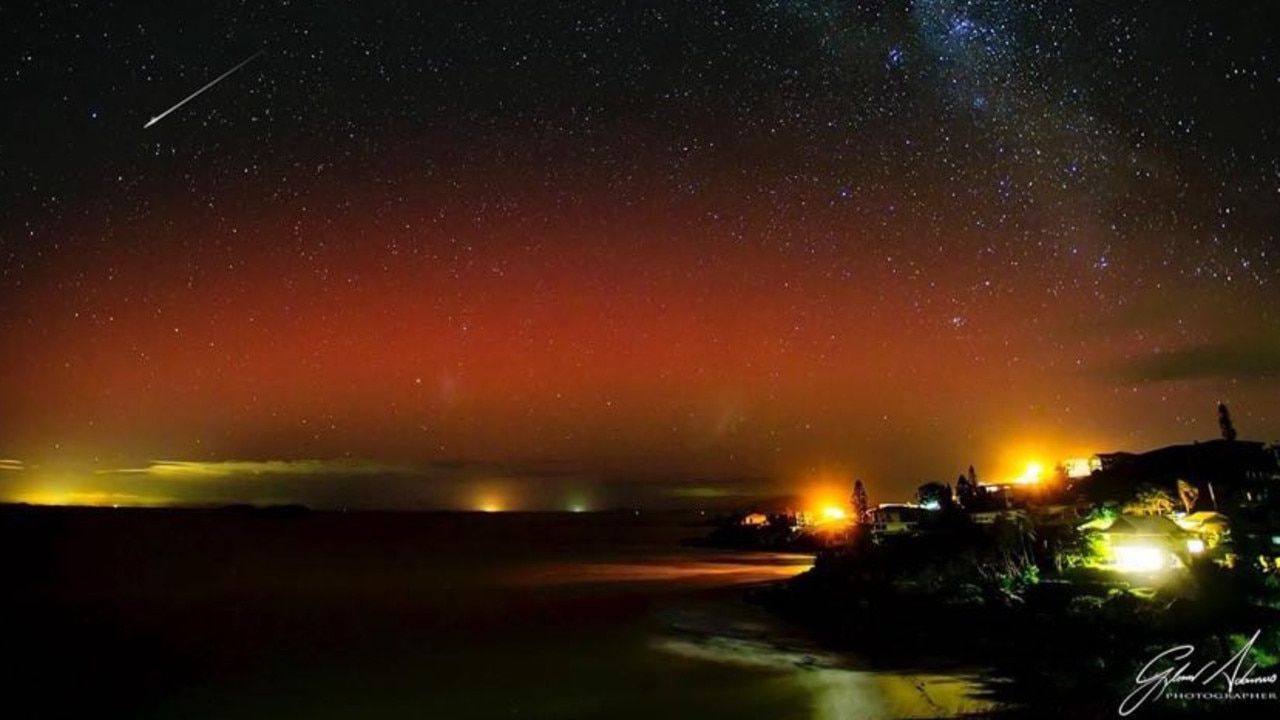
“So I went out to Rocky Point and took some 10 to 15 second exposures and it revealed so beautifully.
“I’ve never seen it before in my life, it was like a miracle, and a bucket list item come true.
“I’ll never see it again, this is something I thought I would never live to see, let alone from here on the Central Queensland coast.”
Victorian traveller Philip Mahon captured the rare event from the Town of 1770 in the Gladstone region.
“I was stoked, I wasn’t sure if I’d see it or not,” Mr Mahon said.
“I took a quick picture of my mobile phone and it picked up some colour so I just set up the camera and started taking shots.
“It was highly unexpected, we are so far north here, it was amazing, I was very happy to get what I did.
“There were a few backpackers up here looking at it and they were flabbergasted by it.”
Noosaville-based landscape and nature photographer George Berg ventured to Lake Cootharaba to capture the lights, after seeing images from the state’s north.
“I saw some photos from Mackay on social media, so I kind of thought I would give it a go,” he said.
“I headed slightly inland away from the city lights, took a test photo, and came up trumps.”
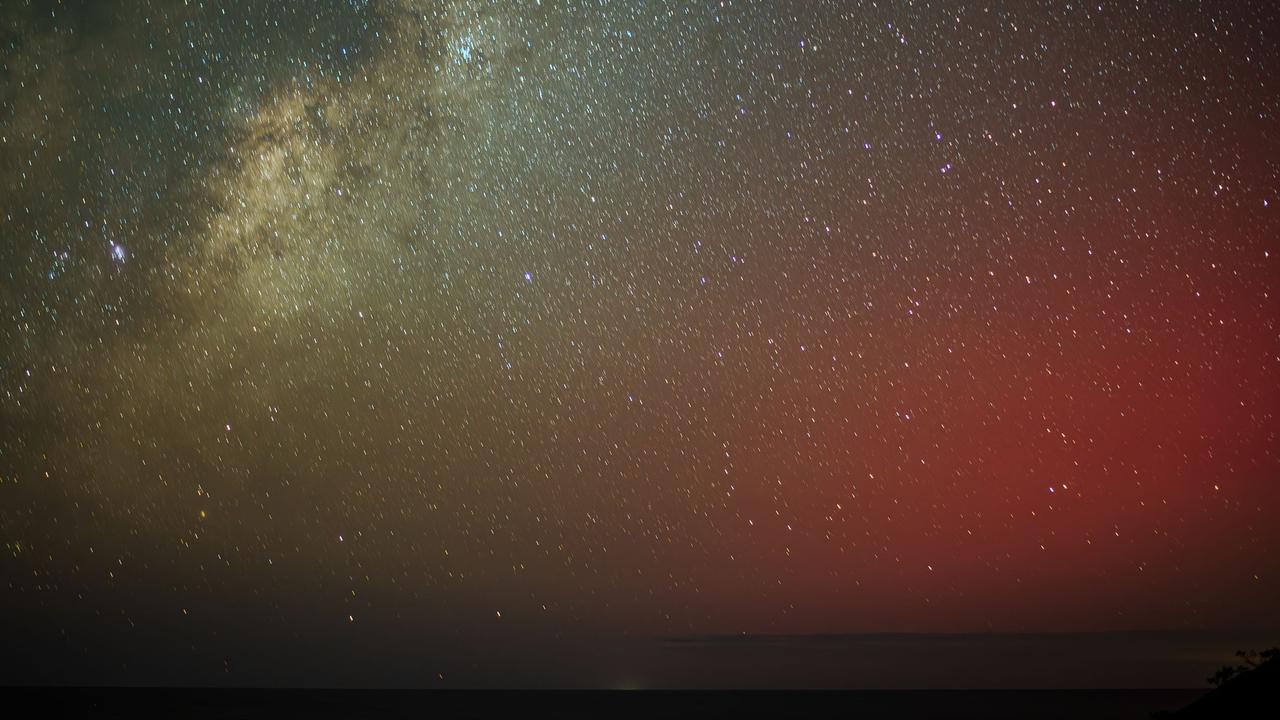
Mr Berg, who recently travelled to Iceland to see the northern lights, was surprised to see the southern lights in the local area.
“I was amazed, absolutely gobsmacked,” he said.
“I literally travelled to Iceland three weeks ago to see the lights or so, so to come back here and see it in my own backyard, I didn’t think it would happen in a million years.
“I didn’t think I would be able to see it 20 minutes away from my house.”
University of Queensland astrophysicist Benjamin Pope said the recent light show was caused by “probably the biggest geomagnetic storm in 20 years”.
“It’s really exciting,” Dr Pope said. “The sun has trucked off material that is called a coronal mass ejection, as part of a solar flare, a huge coronal mass ejection, a sequence of really big ones, and these have hit the Earth.
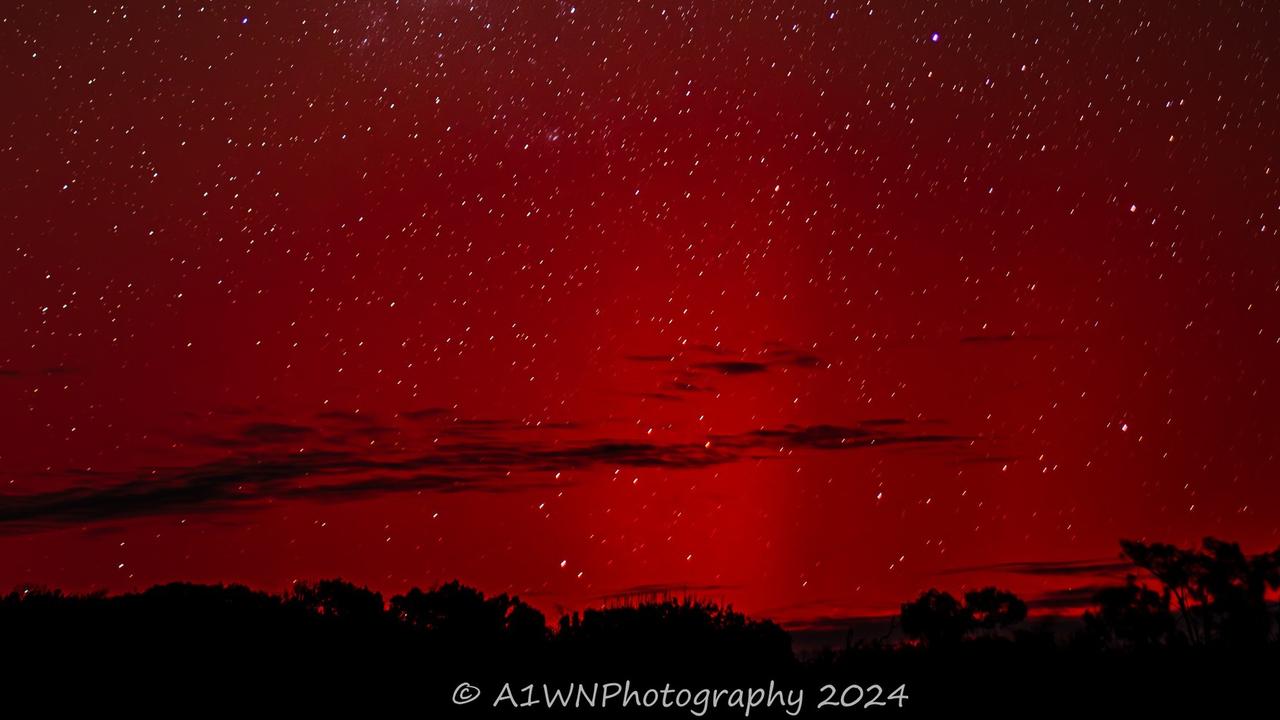
“This material is spiralling down onto the Earth’s atmosphere and causing this aurora where it lights up particles in the atmosphere.
“It’s still ongoing because this set of sunspots is still actually showing flares, really big ones called X-class flares, which are the biggest you don’t get those every day.
“We’ve got several in the last week, it’s pretty exciting.”
Dr Pope said it was “pretty extraordinary” for the southern lights to be seen in Queensland.
“The biggest auroras have been seen into the tropics in the past, but that’s extremely rare.”
Dr Pope added that the geomagnetic storms can have impact on the power grid and telecommunications.
“These geomagnetic storms can actually cause people problems,” he said.
“The way it distorts the ionosphere, which is the sort of top layer of the Earth’s atmosphere, the atmosphere actually reflects radio waves and the way it distorts and strengthens the ionosphere means that this is actually causing problems for radio telecommunications.
“This thing has been moving the Earth’s magnetic field around just buffering it and this is pushing currents around big loops of wires all over the world.
“It’s also going to put pressure on the power grid, I reckon everyone at Energex is going to have a sleepless night.
“Internet providers, phone providers, people who depend on satellites and or long distance transmission lines will be working very hard today.”
Those who missed out on seeing the display will have another chance to see it Sunday night, depending on weather conditions. The ideal viewing time is between 10pm and 2am.
Originally published as Southern Lights, aurora australis captured across Queensland





